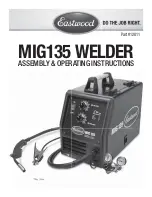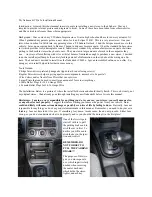
EBS 10K Flat Lid 07.2019
Page 9 of 28
DESCRIPTION OF FILTER OPERATION
Filtering process:
The EBS is a sophisticated yet easy-to-operate automatic filter, with a self-cleaning mechanism driven by an electric motor. The EBS is
designed to work with various types of screens in filtration degrees from 500 to 10 micron, and is available in 8", 10", 12" and 14"
inlet/outlet diameter.
The water enters through the inlet pipe into the fine screen from inside out. The "filtration cake" accumulates on the fine screen
surface and causes head loss to develop.
Self-cleaning process:
The EBS will start the self-cleaning process when the pressure differential across the screen reaches a pre-set value or a predetermined
lapse of time.
Cleaning of the filter element is carried out by the suction scanner, which rotates in a spiral movement while removing the filtration
cake from the screen and expels it out through the exhaust valve.
The scanner rotation is operated by a 2-way (fwd/rev) drive unit which is attached to the scanner by a threaded shaft, providing the
linear movement.
The exhaust valve is activated for the duration of the cleaning cycle by a 3-way solenoid. During the self-cleaning process, which takes
approximately 35 seconds, filtered water continues to flow out of the filter.
Different modes of filtration:
The filtration system may be found in one of the following modes:
1. Filtering mode: This is the normal function condition. Flushing is not occurring and the power light on the control board is lit.
2. Flushing mode: A mode in which the flushing process is in progress. The motor and the exhaust valve are operating according to the
program.
3. Continuous flushing mode: It is possible to activate the self-cleaning mechanism continuously by changing the operation mode on
the HMI.
4. Malfunction mode: During malfunction mode the self-cleaning operation is stopped, the malfunction light on the control board is
turned on and an external output is activated. In case that there is HMI, the relevant fault error will be displayed.
The filtration system may enter a malfunction mode in the following cases:
1st.
When there is a continuous signal from the pressure differential switch for duration of more than 15 minutes. This means that
the self-cleaning process is not successful.
2nd. When the motor protector was activated, either manually or due to overload.
3rd.
As a result of a malfunction in the limit switches.
Initiation of self-cleaning:
The filter will enter the self-cleaning process as a result of any of the following causes:
1. A signal from the Pressure Differential Switch (PDS) - The PDS which is situated on the filter body, sends an electric signal when the
pressure differential across the screen reaches the pre-set value (usually 0.5 bar =7 psi). The control board registers the signal and
operates the flushing process according to its program.
2. Manually pressing the "TEST" push button at the control board.
3. The TIMER installed in the control board allows operation of self-cleaning process at time intervals that can be set up, independent
from the head loss factor. The timer resets after every flushing cycle.
4. A signal from continual flushing switch - This switch in the control board allows operation in continuous flushing mode; meaning,
the filter is flushing itself all the time regardless of flow rate or water quality.
Stages of cleaning cycle:
Under normal operating condition the electrical control panel operates the "EBS" filter in the following manner;
1. The exhaust valve opens to atmosphere.
2. Five seconds delay.
3. The motor starts rotating the suction scanner shaft upward until it reaches the upper limit switch.
4. The exhaust valve closes.
5. Two seconds delay.
6. The motor starts rotating the suction shaft downward until it reaches the lower limit switch.










































